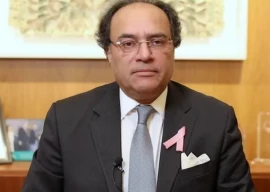
Australia’s overwhelming focus on Southeast Asia, alongside its growing relationship with India, seems to have become disincentives for Australia to have a simultaneous presence in Pakistan. However, this did not necessarily need to be the case. Australia and Pakistan also have some strategic commonalities. Like Pakistan, Australia tries to maintain a balanced relationship between China and the United States. Only five years ago, just after China announced CPEC, the Australian Foreign Minister visited Pakistan and expressed a desire to build a long-term relationship with Pakistan due to its size and strategic location.
Instead of developing a closer relationship, however, this relationship is now set to dwindle. Australia’s bilateral development assistance to Pakistan had peaked to around $70 million in 2009, but has been declining since then. By 2019-2020, Australia decided to nearly halve bilateral aid to Pakistan from around $39 million to $19 million. While bilateral aid is officially ending, Pakistan will continue to receive some humanitarian assistance and scholarship opportunities for Pakistani students to study in Australia (which I also availed to get my PhD).
The cessation of official Australian bilateral aid is not going to be backbreaking for Pakistan, but it does mean that Australia is not only going to lose its leverage with Pakistan, but also forego potential opportunities of aligning itself with broader economic opportunities, such as CPEC.
Conversely, Australia’s overall aid programme is now being redirected to support new initiatives in its immediate Pacific region amid fears of growing Chinese influence on Australia’s doorsteps.
Besides the political influence that aid yields, there is also the issue of it being able to address genuine needs. Australian aid to Pakistan had been supporting girls’ education, reproductive health efforts and addressing the problem of gender-based violence. Many on-ground activities will undoubtedly be impacted by the cessation of funding.
Pakistan is not the only country in the region facing the brunt of Australian aid cuts. Nepal has also been hit by similar cuts. Bilateral assistance to Bangladesh was slashed too, compared to the previous years. In fact, Australia’s overall foreign aid budget has gone down significantly in recent years.
Official development assistance as a percentage of a country’s Gross National Income is the universal measure to assess the generosity of a country’s foreign aid. Australia was the 14th most generous of 30 donor countries in 2015. In 2017, its ranking dropped to the 19th position. Then in 2018, the Australian minister for international development claimed that 80% of Australians do not support any further spending on foreign aid. Trying to probe this issue further, a poll conducted by the Lowly Institute found that public perceptions concerning foreign aid are highly inflated and not based on reality. The average Australian believes that the country invests about 14% of its federal budget on foreign aid, whereas it should invest about 10%. However, Australia invests well under 0.8% of its federal budget on aid, and this proportion is now shrivelling further.
Overall, Australian aid flows are down by over a quarter in real terms since 2013, which is an all-time low. Local aid experts and Australian NGOs have termed this move a national disgrace.
Despite the size of its economy (9th largest in the world), it is unfortunate that Australia seems bent on reducing its role in supporting international development goals. This trend will further mute the country’s voice in the international community, in addition to exacerbating its internal myopic tendencies.
Published in The Express Tribune, February 28th, 2020.
Like Opinion & Editorial on Facebook, follow @ETOpEd on Twitter to receive all updates on all our daily pieces.




























1714129906-0/Clint-Eastwood-(1)1714129906-0-270x192.webp)






COMMENTS
Comments are moderated and generally will be posted if they are on-topic and not abusive.
For more information, please see our Comments FAQ